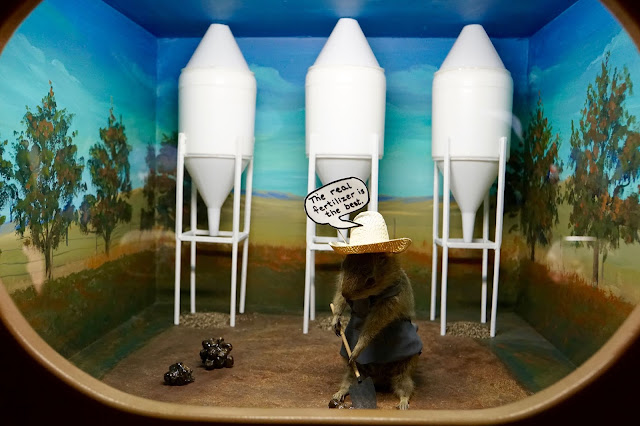Until 20 years ago I lived most of my life in Alberta and drove past many unique points of interest along the way. This time we checked out a couple of those sites.

Engineers designed a completely unique structure to bring water from the Bow River across a wide valley. Stretching over 3 km, it was the longest concrete structure of its kind in the world.
While under construction the Aqueduct bristled with wood and steel like a giant concrete porcupine.
One of the many challenges was the CPR track running across the valley directly in line with the aqueduct. A technical innovation of an inverted siphon carried water under the CPR mainline and up to grade again.
The aqueduct was just one part of the irrigation system. Smaller canals, ditches, flumes, pumps and gates directed the water onto farmers’ fields.
There were many unanticipated challenges once water was flowing in the aqueduct. Friction reduced the speed of water flow. Weeds also flourished due to the hot, sunny weather of southern Alberta.
Ditch riders rode up and down the canals and ditches making sure the water was flowing and the farmers were getting the water they needed. The daughter of a ditch rider recalls her dad with his “gumboots on, digging, shoveling and getting water to run where it didn’t want to run trying to make grumpy farmers happy”.
The Aqueduct never reached its planned volume of water but it did get water to the farmers who needed it. By 1979 it was replaced with an elevated two-bank earthfill canal and a reinforced concrete inverted siphon that could carry about 50 percent more water.
Today the Aqueduct is a testament to the perseverance and determination of early settlers to farm land that was first thought to be uninhabitable.
At the site there are many story boards about the construction and life of the Aqueduct. It is worth a visit just to try to understand the thought and work that went into creating this piece of history.
Gopher Hole Museum catches your attention simply by its name. Yes, gophers live in holes on the prairies but how can that be of interest?
In 1996 the small community of Torrington opened their claim to fame, The Gopher Hole Museum.
Located between Red Deer and Calgary, the community of less than 200 people is world famous. When PETA learned about a museum stuffing small rodents for entertainment purposes only, the group was outraged. When they arrived to check it out a member was directed to a nearby field to see how many gophers were in the neighbourhood. When he was surrounded and one ran up his pant leg he realized stuffing a few gophers was not going to endanger the species.
As this visitors map shows, the media attention was priceless.
Gophers are costumed and arranged in dioramas as member of the community.
Torrington School
I’m a beautician not a magician!
The Market
I’ll see you 5 and raise you 5.
The real fertilizer is the best!
Oh boy, am I ever stuffed!
I hope I’m not being too TACKful.
Did I hit the broom?
Have a nice trip.
Gopher Olympics
Fastest Grain Eater
Fastest Hole Digger
Fastest Car Dodger
This is a holdup. Put your paws up.
Village Campground
The detail and creativity in each diorama is amazing. The scenes and comments appealed to Ralph and I and Joey (age 21) and Danica (age11).
Clem T. GoFur is the town mascot.
The village has painted fire hydrants to portray Clem’s family.
Homer and Trixie
When Homer was injured in a fall from a hay wagon passing through town, Trixie cared for him. When love blossomed they married.
They raised Clem, Tubby and Peggy Sue.
Gophers are synonymous with prairie summers. Torrington has added humour and creativity to their image.


































LOL!!!
ReplyDeleteThis was actuaĺy featured on Heartland I believe.
ReplyDelete